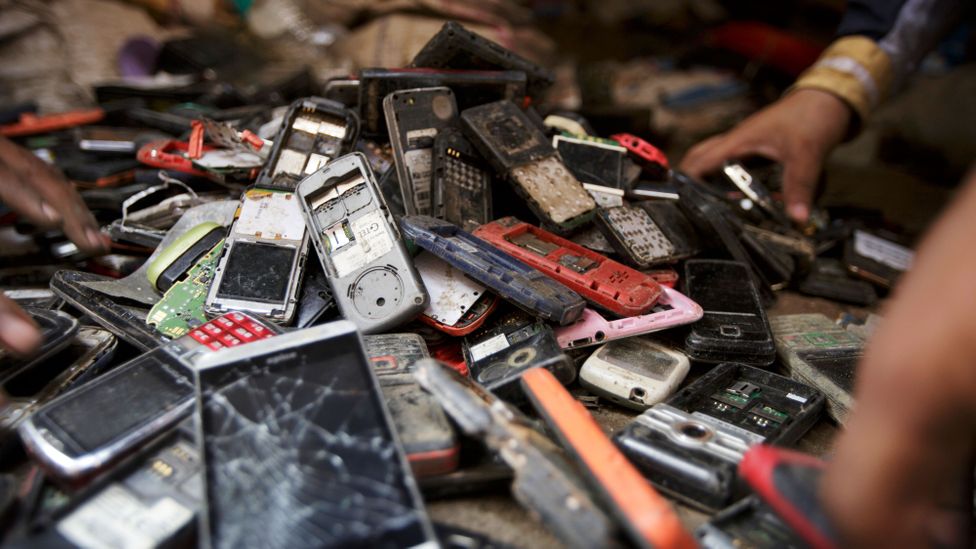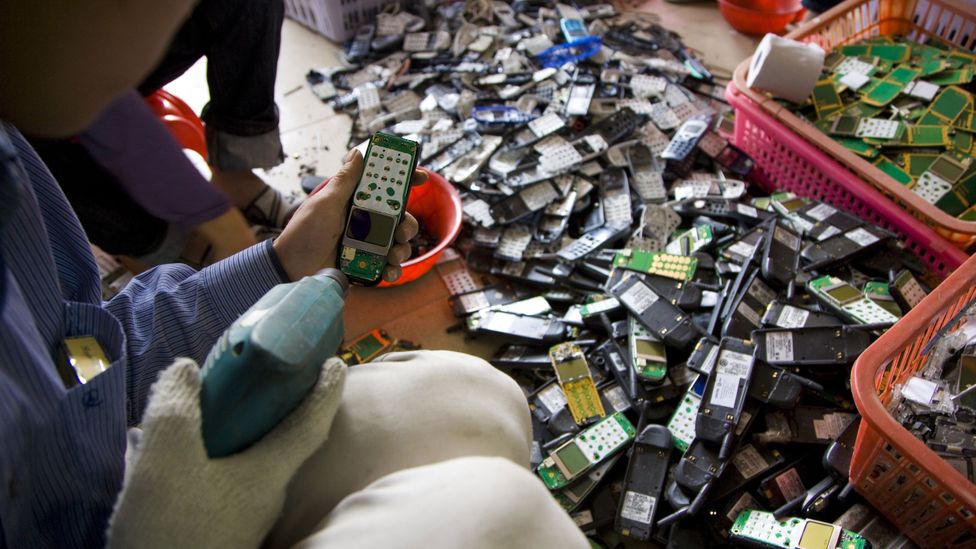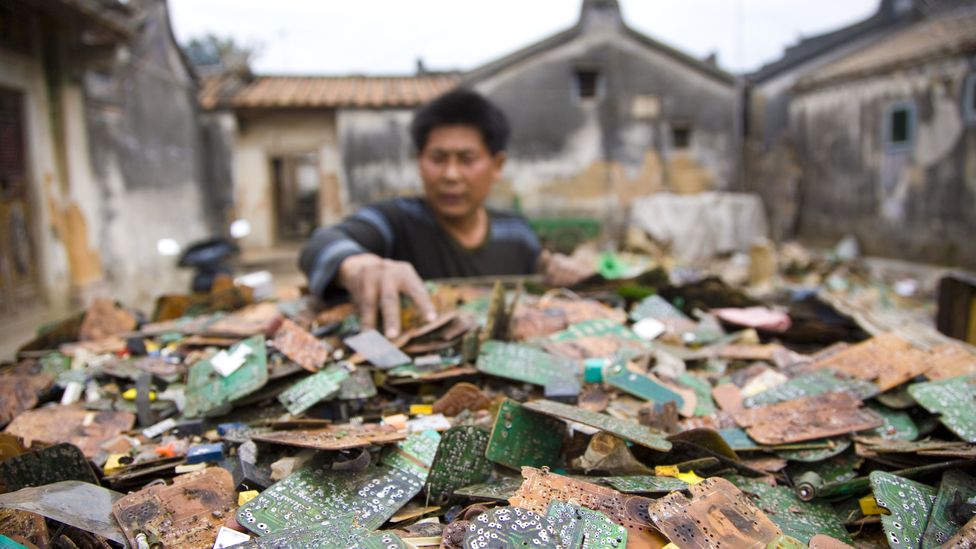Where to Get Metal Stencil of Lotus Flowers
Your old phone is full of untapped precious metals
(Image credit:
Getty Images
)

There's gold, atomic number 78 and other valuable materials in every phone – the hard theatrical role is getting it out.
Approaching issue
The World-Changing Ideas Summit
This story is break of a series inspired by the subjects and speakers appearing at BBC Future's World-Dynamic Ideas Summit in Sydney on 15 November. Find out to a greater extent about the inspiring people coming to the confluence, including:
- Investigator Veena Sahajwalla happening recycling "microfactories"
- BBC TV presenter Michael Mosley on the skill of food and health
- Uber's Kevin Corti happening the secret patterns of city transport
- Researcher and TV presenter Emma Johnston on the impact of cities on oceans
- Experimental designer Rachel Armstrong on interstellar travel
- Astronauts Ron Garan and Saint Andrew Thomas
+ many another more
A diamond-crusted iPhone can exercise set you back $95m – but if this piece of i-bling is a little come out of the closet of your price range, don't feel heartsick. All smartphone contains precious metals including gold, silverish, pig, Pt and palladium.
This is more than just an amusing detail about the device that never leaves your side. These wanted metals are today looking more precious than ever, as we face the prospect of unmatchable day being no yearner capable to open to dig them out of the terra firma. Suddenly your smartphone is looking a lot more valuable than you might think.
The secret value of the metals inside our old electronics, and how we might best excerption those materials is one of the topics that will be discussed at BBC Future's World Changing Ideas Summit in Sydney in November.
WHAT EXACTLY IS IN MY SMARTPHONE?
Smartphones are minor vaults of precious metals and rare earths. A typical iPhone is estimated to house around 0.034g of gold, 0.34g of facile, 0.015g of palladium and less than one-thousandth of a gram of platinum. It also contains the to a lesser extent valuable but still significant Al (25g) and copper (around 15g).

From phones to computers, Guiyu in China processes much of the world's e-waste - in 2008, adequate 80% of material processed there came from overseas (Credit: Getty Images)
And that's just the start. Smartphones as wel contain a drift of lanthanide elements – elements that are actually plentiful in the Worldly concern's encrustation but extremely difficult to mine and pull up economically – including yttrium, lanthanum, terbium, neodymium, gadolinium and praseodymium.
And so there's also the formative, the glass over, the battery… IT's a identical provident list of ingredients.
These are all acquaint in comparatively small amounts. But more than two billion people currently have a smartphone, and that number is projected to increase. What's more, the concentration of some of these elements, such As gilt and silver in a mobile phone is actually much higher than their density in an eq weight of ore. One tonne of iPhones would deliver 300 multiplication more gold than a tonne of gold ore and 6.5 times more than silver than a tonne of silver ore.
WHY IS THIS A PROBLEM?
Because those 2 billion smartphone users upgrade to a new phone roughly every 11 months, which means their long-ago smartphone gets cast into a drawer someplace and forgotten about, or it gets thrown impossible. Barely 10% of these get recycled and their precious components recovered and reused. It's a veritable gold mine nonmoving in cupboards, in boxes, in landfill. In an epoch when the prefix 'peak' is starting to be added to a mint of resources as good as oil, information technology makes economic and environmental sensory faculty to avoiding atrophy so much valuable substances.
WHAT HAPPENS TO THESE RESOURCES WHEN A SMARTPHONE BECOMES OBSOLETE?
In case you're cerebration of trying a little electronic gold excavation at the individual scale, the miniscule amounts in each smartphone should make you think twice. But in one case you start intelligent at the big scale, it looks a mickle much bewitching: peerless million mobile phones could deliver nearly 16 tonnes of copper, 350kg of facile, 34kg of gold and 15kg of palladium.
The gainsay is how to recover those minerals and materials safely and economically. A world-shaking proportion of e-waste – including mobile phones – gets exported or dumped in countries such every bit PRC where poorly profitable workers and children are reported to be used to break apart these electronics, often using dangerous chemicals to get to the semiprecious components. One town in south-eastern China named Guiyu has claimed the dubious distinction of being the largest e-waste site in the world. It's causing terrible health problems for its residents and polluting the filth, rivers and vent with mercury, arsenic, atomic number 24 and booster cable.
Even e-waste that is recycled in its country of origin poses a challenge. In Australia, for example, recycling of e-waste still involves industrial smelting which is high monetary value and far from environmentally-benign.

Electronic devices contain many treasured metals and rare earth elements, just much of it is extracted in polluting, toxic places such Eastern Samoa Guiyu in China (Reference: Getty Images)
THERE MUST BE A BETTER WAY?
Of course in that location is. Ideally, we'd stop changing our smartphones faster than we change our underpants. But recognising that changing consumer behavior is in all likelihood the to the lowest degree practicable option, we need to come in with something better.
Materials man of science Veena Sahajwalla from the University of New South Wales is winning a small-scale approach to a global problem. Sahajwalla, World Health Organization leave be presenting at BBC Upcoming's WCIS event in November, sees the future in "micro-factories", one in every community of interests, that can safely, cleanly and efficiently extract all the valuable metals from obsolete mobile phones and burn the eternal rest.
Her approach is very hands-bump off, minimising the need for human contact with the more dangerous materials indoors smartphones. The mobile telephone set is stiff apart using high-power current. Then the important written circuit boards are retrieved by a robotic arm, and fed into a tiny furnace that uses precisely-controlled, high-temperature reactions to draw out the valuable metal alloys. Any toxic or unwanted materials can then be safely incinerated.
The whole set-up is contained in something the size of a shipping container, which could get in the ultimate bungalow industry for someone looking gold in them thar mountains of e-waste. Who knows – do IT for long enough and you mightiness well be able to body-build your own solid-amber, diamond encrusted smartphone.
Join 700,000+ Future fans by liking US on Facebook , or adopt us on Twitter , Google+ , LinkedIn and Instagram .
If you liked this story, sign up for the time period bbc.com features newsletter , called "If You Only Read 6 Things This Week". A handpicked natural selection of stories from BBC Succeeding, World, Culture, Capital, Travel and Autos, delivered to your inbox all Friday.
Where to Get Metal Stencil of Lotus Flowers
Source: https://www.bbc.com/future/article/20161017-your-old-phone-is-full-of-precious-metals
0 Response to "Where to Get Metal Stencil of Lotus Flowers"
Postar um comentário